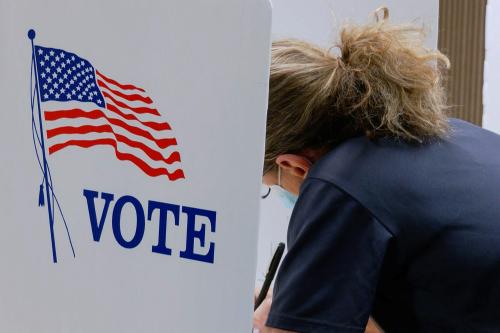This month’s issue of Government Executive (subtitled Can’t Hire Can’t Fire) masterfully tackles the problems with America’s civil service system head on.
In the editor’s note, Tom Shoop highlights two areas of federal management that are particularly plagued by red tape: hiring and firing. While the government’s emphasis on fairness in hiring and firing is certainly worthwhile, Shoop acknowledges that, “it’s difficult to look at what the federal hiring and firing process has become and not conclude that some major changes are in order.”
In “Held Back” Kellie Lunney reports on the challenges of federal hiring. When asked in a survey conducted by the Government Business Council, federal employees identified the length of the hiring process as the most significant impediment to hiring qualified candidates in the federal government. For many government positions it can take months to fill a vacancy, by which point applicants lose interest or find work elsewhere.
Forty-three percent of respondents identified special hiring authorities as a problem. The government’s efforts to promote fairness and diversity and hire veterans and young people are laudable. However, as Lunney notes, they are also enshrouded in highly complicated rules and regulations that often leave hiring managers, HR staff, and applicants befuddled on who or how to give preference during hiring.
“There are so many factors about the person applying, the position for which he or she is applying, the authorities being used, and the agency in which the positions exist, that the system is beyond unwieldy,” the Merit Systems Protection Board wrote.
The website that houses nearly every federal job vacancy is a hodgepodge of civil service jargon and vague job descriptions. Over 40% of survey respondents agreed that the USAJobs’ application process is not useful for people trying to enter the civil service. Even an “advanced search” lacks the navigation tools to help link job-seekers to positions that align with their interests and qualifications.
Another one of the issue’s features, “Firing Line” by Eric Katz, looks at critics’ charges that it’s too hard to remove under-performing employees in the federal system. In a survey of federal employees, “nearly eight in 10 agreed that federal termination procedures ‘discourage the firing of poor performers.’”
In the article, Tim Curry (Deputy Associate Director for Partnership and Labor Relations at OPM) concedes that the process for terminating a federal employee is lengthy and difficult, saying “The procedures for terminating employees are perceived as a lengthy process.”
In a survey of federal employees, “nearly eight in 10 agreed that federal termination procedures ‘discourage the firing of poor performers.’”
However, this doesn’t mean federal employees are immune from reprimand. In fact, 24 federal employees are fired, on average, every day. However, the process is complicated and may require managers and HR personnel to navigate the Merit Systems Protection Board (MSPB), the Equal Employment Opportunity Commission (EEOC), or both, before an employee can be removed. Anecdotal evidence suggests that employee transfer is also a problem—some problem workers are given good reviews, or have their records expunged, only to move onto another office or agency within the government. The government’s firing rate in 2013 was only 0.47 percent.
“Is the disparity between public and private firing rates proof the federal system protects employees who can’t or won’t do their jobs? Or does it illustrate the rigor of a hiring process that weeds out most poor performers before they even start?”
Aside from the obstacles identified by federal employees, the Office of Personnel Management (the agency tasked with managing the civil service, creating personnel regulations, and overseeing federal HR policy) faces many institutional barriers of its own. Complex and outdated rules, restricted resources, inefficient personnel data systems, and a disconnect across agencies all contribute to a broader culture in the federal government that often leaves personnel management on the backburner.
But, Katz and Lunney argue the momentum for reform is growing. Federal agencies like HUD are undertaking human capital initiatives. The House has already passed a bill expanding firing authority for the VA. Last year, the Partnership for Public service released a lengthy report full of reforms for the federal civil service system. Although civil service reform is a topic with little political payoff, it might just be something the new Republican Congress and President Obama can agree on.



Commentary
Government Executive’s Jan/Feb Issue Focused on Government Personnel Issues
January 23, 2015